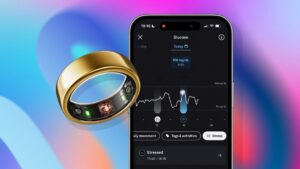
In a country that prides itself on outdoor activities—from tailgates and baseball games to beach vacations and sunny road trips—America faces a surprising health issue: vitamin D deficiency. Despite ample sunshine in states like California, Florida, and Texas, nearly 42% of adults in the United States are deficient in this crucial nutrient. This deficiency persists even though vitamin D is vital not only for bone health but also for regulating immunity, mental health, blood pressure, and insulin levels.
While supplements are an option, natural sunlight remains the best source of vitamin D. However, dermatologists caution that timing is essential to maximize benefits without harming the skin. The body produces vitamin D when exposed to UVB rays, which are most potent between 10 a.m. and 1 p.m. This makes midday sun exposure crucial for effective vitamin D synthesis.
The Science Behind Sunlight and Vitamin D
Many people are unaware that early morning and late afternoon sunlight primarily delivers UVA rays, which contribute little to vitamin D production. In contrast, UVB rays, prevalent during late morning and early afternoon, are necessary for the skin to produce vitamin D efficiently. This means that a walk before work at 7:30 a.m. or a sunset jog after dinner is unlikely to boost your vitamin D levels significantly.
Dr. Sarah Johnson, a dermatologist at the University of California, explains, “The UVB rays needed for vitamin D synthesis are strongest around midday. A short exposure during this time can significantly impact your vitamin D status, especially if you have fair skin.”
Practical Tips for Safe Sun Exposure
To optimize vitamin D production, consider incorporating brief periods of sun exposure into your daily routine. This could involve taking a coffee break outdoors, going for a walk during lunch, or having a meal in a sunny spot. Even 10 minutes with exposed arms and legs can make a meaningful difference over time.
However, it’s crucial to balance sun exposure with skin protection. Dermatologists recommend covering up or applying sunscreen if you’re outside for more than 20 minutes or if the UV index is high. For individuals with a family history of skin cancer or sensitive skin, consulting a healthcare provider is advisable.
Implications for Different Demographics
While sunlight should be the foundation of a vitamin D strategy, supplements may be necessary for certain populations. Older adults, individuals with darker skin, and those living in less sunny areas might require additional vitamin D intake. According to the National Institutes of Health, “Vitamin D supplements can help bridge the gap for those unable to get sufficient sunlight exposure.”
By the Numbers: “Nearly 42% of U.S. adults are vitamin D deficient, highlighting the need for effective sunlight exposure strategies.”
As the understanding of vitamin D’s role in overall health continues to evolve, so does the importance of strategic sun exposure. The next time you’re on a Zoom call, take a moment to check the time. If it’s around 11:30 a.m., consider stepping outside, rolling up your sleeves, and letting the sun do its job.
Looking Ahead
As awareness of vitamin D’s health benefits grows, so does the need for public health initiatives promoting safe sun exposure. Educational campaigns could help dispel myths and encourage practices that balance vitamin D production with skin cancer prevention.
Ultimately, understanding the timing and benefits of sun exposure can empower individuals to make informed decisions about their health. By integrating these practices into daily life, Americans can take a proactive approach to improving their vitamin D levels and overall well-being.







